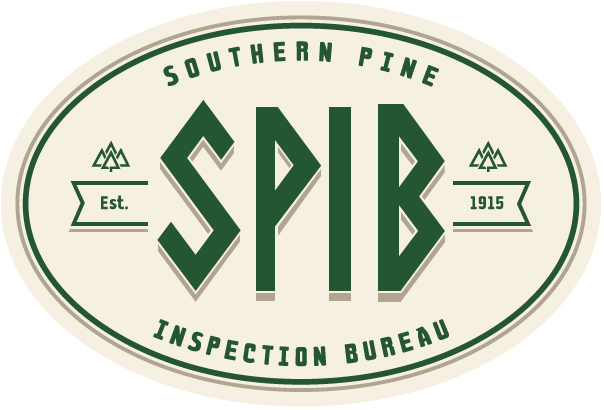
Lumber Grade Marking History: 1937
Introduction
1937 was another banner year in the United States, both in ways that people could have predicted at the time and in many ways that they couldn’t.
Early in the year, Howard Hughes set a new flight record by making his way via airplane from Los Angeles to New York City in just under seven and a half hours. In February, President Franklin D. Roosevelt proposed his plan to enlarge the Supreme Court of the United States.
A novella that many of us are familiar with was first published on February 6 – John Steinbeck’s classic “Of Mice and Men.” This proved that the Great Depression was anything but a distant memory and indeed was still at the forefront of the minds of a lot of people.
1937 was also the year that saw the southern pine industry fight against “jerry-building”, through a series of educational services spearheaded by the Southern Pine Association. That organization – in association with their inspectors and contact men – saw the first of many successes in that realm.
This year also gave birth to revisions of certain portions of the grading rules, which were deemed to be necessary to narrow the spread in the quality of products by restricting the personal function of the judgment of graders. This was also important for the protection of retail lumber dealers who themselves specialized in quality wood products.
It was another incredible year in the decades-long journey of an entire industry, and we trust that you will continue to find it as exciting as it is enlightening.
1937
The southern pine industry fight against “jerry-building” through the educational services of the Southern Pine Association, their inspectors, and contact men, while a continuing one, had been successful. One of the largest contributing factors to the increased specification of SPA grade marked lumber by government departments, specifiers and buyers, was proof offered by the SPA educational programs as to the kind of product delivered when grade marked lumber was not required. Advertising campaigns in many key cities and communities on behalf of quality lumber and good construction developed conclusions similar to those of the Dallas, Texas dealers – in that the best interests of dealer and industry were considered with the sale of SPA grade marked lumber.
The FHA showed increasing interest. It enlarged its scope of inquiry and inspection requests for SPA grade marked or certified lumber in cities and communities not included in any of the SPA advertising and quality lumber campaigns. FHA was cooperating, unsolicited – to be assured of the delivery of quality lumber for use in houses built under the FHA plan.
The U.S. Housing Authority – slum clearance projects – decided that:
1. Frame construction was permissible.
2. The selection of building materials was in the hands of the local agency.
Revisions of certain portions of the grading rules were thought necessary to narrow the spread in quality by restricting the grader’s personal function of judgment – for the protection of retail lumber dealers who specialized in quality wood products. Closer inspection and supervision of grading and manufacture at mills licensed to grade mark was a continuing process but inadequately financed for the support of an efficient sized organization. Unless all subscribers licensed to grade mark conformed to the requirements of the grading rules and to the provisions of the licensing agreement, little confidence could be expected in the SPA grade mark lumber symbol; and the advantages to the manufacturer, wholesaler, retailer, and the consumer would be lost.
Quality lumber campaigns accomplished cooperatively by dealers and SPA continued to be held throughout the consuming territory.
Quality and grade marked lumber and sound house construction were the basing points of a ten-week advertising campaign in Columbus, Ohio, and environs. Conducted jointly by local retail lumber dealers and the Southern Pine Association, they campaigned against “jerry-building.” Responsible manufacturers and retailers protected themselves through these educational campaigns against unfair competition represented by “shyster” building practices; and benefitted the home builder. The “Way to Better Homes” advocated the pooling of all forces who designed, financed, constructed, and marketed houses in acquainting the prospective homeowners with proper procedure. Grade marked lumber’s use was fully explained and emphasized as being the consumer’s protection and a guarantee of product grade.
The right lumber in the right place – the right grade and the right quality of lumber used in the right place – grade marking identified the lumber item – the building specification stated the proper grade requirement – all contributed to lumber being the outstanding building material in America. Other materials, however, were displacing the lumberman’s product; accounted for by lack of lumber quality control. The use of good lumber – proper grade, size, and moisture content, accomplished by SPA grade marking, developed quality control as a logical result and effectively discounted the self-appraised values of any substitute material.
American Lumber Standards were undergoing revision. Sponsored by the U. S. Department of Commerce and adopted some fifteen years ago, during the time which has elapsed necessity arose for clarification and a strengthening of the basic provisions to avoid confusion on the part of lumber specifiers and buyers. The revision was further desirable because of the fact that government purchase followed the procedure of the Federal Specifications Board which in turn followed the central committee on Lumber Standards. The Manufacturer’s Standardization Committee of the National Lumber Manufacturer’s Association gave consideration to all of the proposed changes. Basis provisions only, for use by manufacturers in the formulation of grading rules continued to be the American Lumber Standards. Knots, crooks, wane, pitch streaks, etc., were changed in nomenclature to grade “characteristics and limitations.” Grade marking provisions were made definite and emphatic as to the manner of grade marking and the character of inspection service for its support; procedure in grade marking and the character of inspection service for its support; procedure in grade marking practice by each of the regional lumber manufacturer’s associations required submittal and approval of the Central Committee on Lumber Standards. The Western Pine Association retained their sub-standard sizes, below the American Lumber Standards’ specifications, against efforts to have all regional association grade marks refer to the standard size, as well as to standard grade. The Central Committee on Lumber Standards undertook to make available an easily distinguishable, copyrighted, and national uniform mark for use with the regional manufacturer’s association grade marks to identify American Standard lumber.
The Roofer Manufacturer’s Association suggested an independent grade marking program was temporarily rejected pending improvements in their proposed rules – such group situations were regarded as dangerous for the organized efforts of all industries, collectively.
“Grade sweetening” – the preparation of various grades of lumber better than the grade specifications ruled – had resulted in there being the considerable difference between this and other lumber grades more completely under the provisions of the specifications rule. All being grade marked the insignia failed to adequately describe the particular lumber – the better stock obviously tending to suggest criticism of the other, with a certain comparison of one mill’s output to another and ensuring sales increase and resistance, respectively. The larger mills had the quality of timber to accomplish this condition – the smaller mills did not – both grade marked and conformed to the official grading rules. The situation was difficult but not impossible – being in line for early handling.
Mill inspections every thirty days was one of the basic requirements of the Southern Pine Association. The grade marking agreement called for “within the grade” practices. The trade would, logically, refuse below grade stock; and a chaotic situation would result in promiscuous “grade sweetening.” Enforcement of the grade marking agreement was the ultimate solution.
SPA certified inspections were increasing in demand. An alternative for association certificated lumber (SPIS) was, of course, association grade marked lumber (SPA). Claim work continued to assist the control of unwarranted claim actions.
The Roofer Manufacturer’s Association, at their annual meeting in Columbus, Georgia, approved the establishment of grade marking the output of membership mills, under their own copyright rules governing the practice.
The Black Connery Bill was introduced in May 1937. The Southern Pine Industry Committee representing the entire lumber industry, members, and non-members of SPA, from Texas to Florida and Oklahoma to Virginia, was set up on June 3 and 4, 1937 to deal with the Black Connery Bill and any other legislation that might be substituted.
